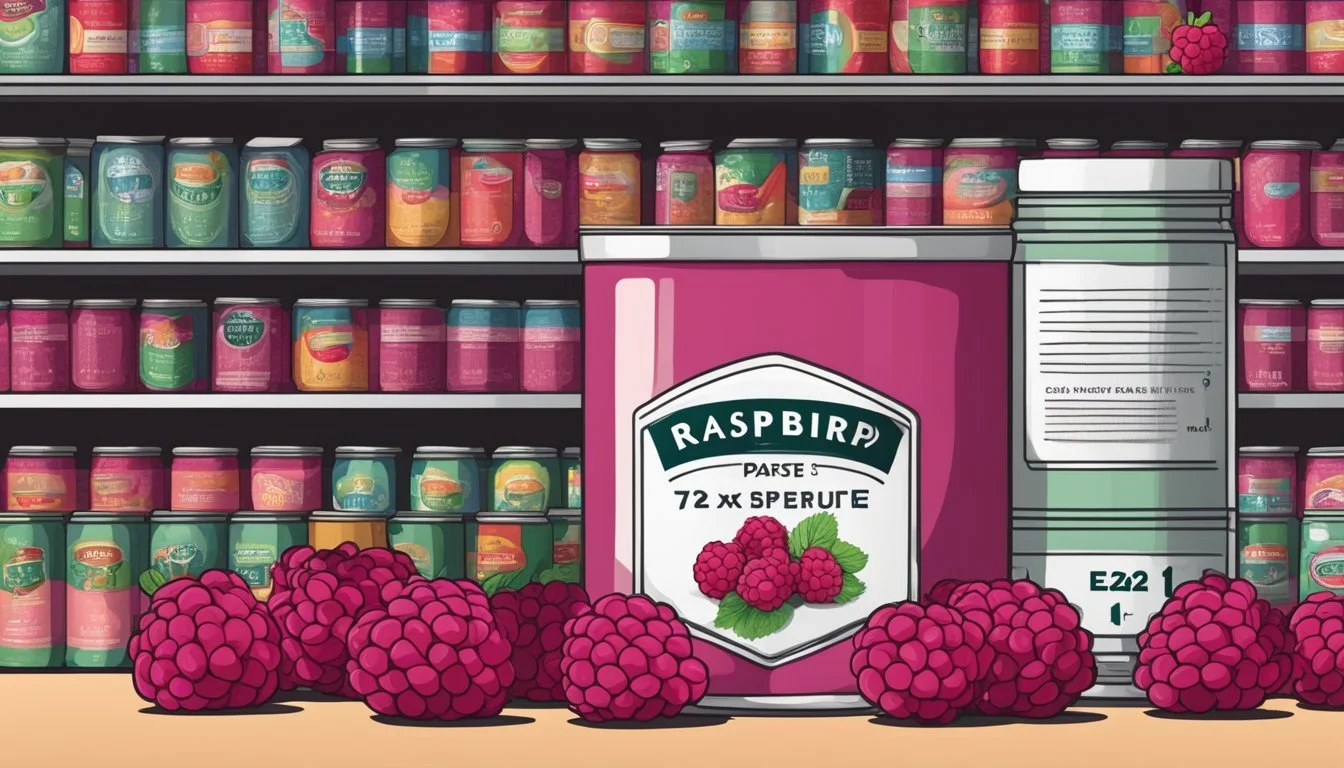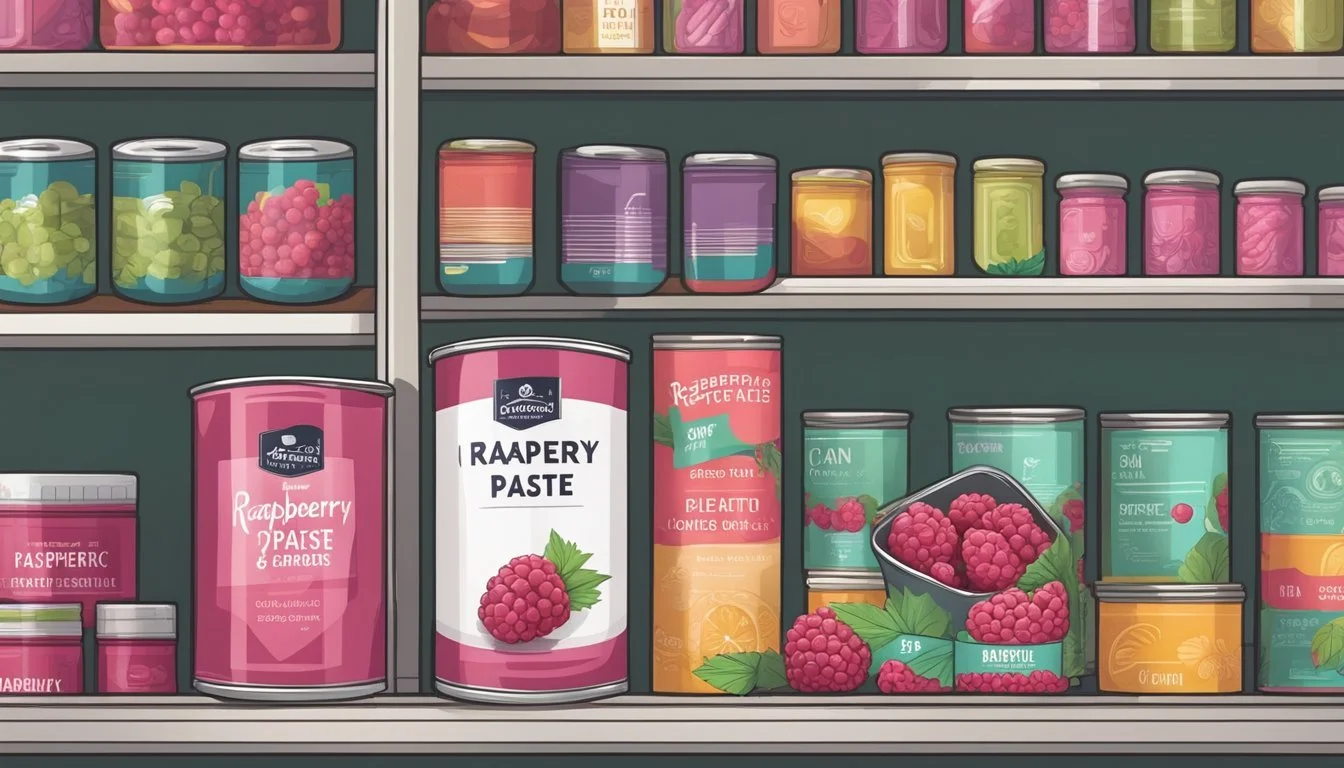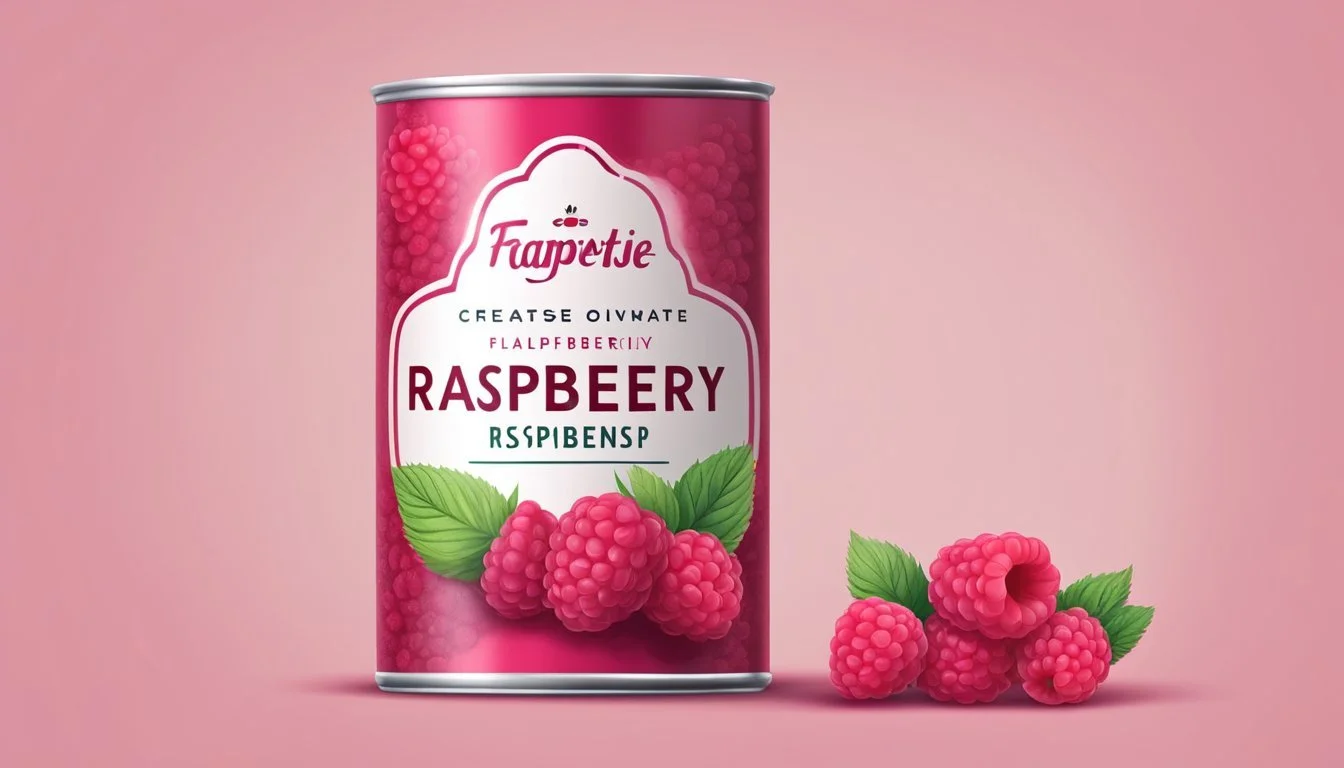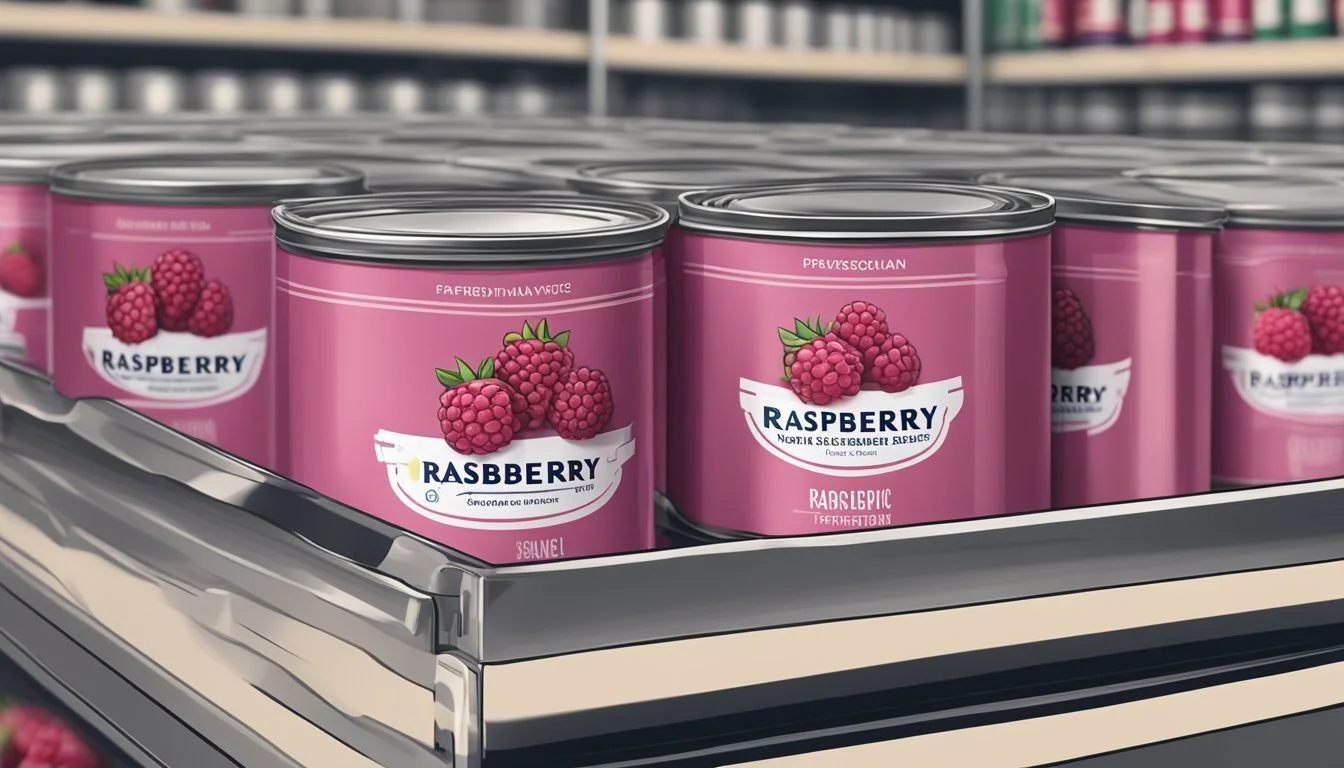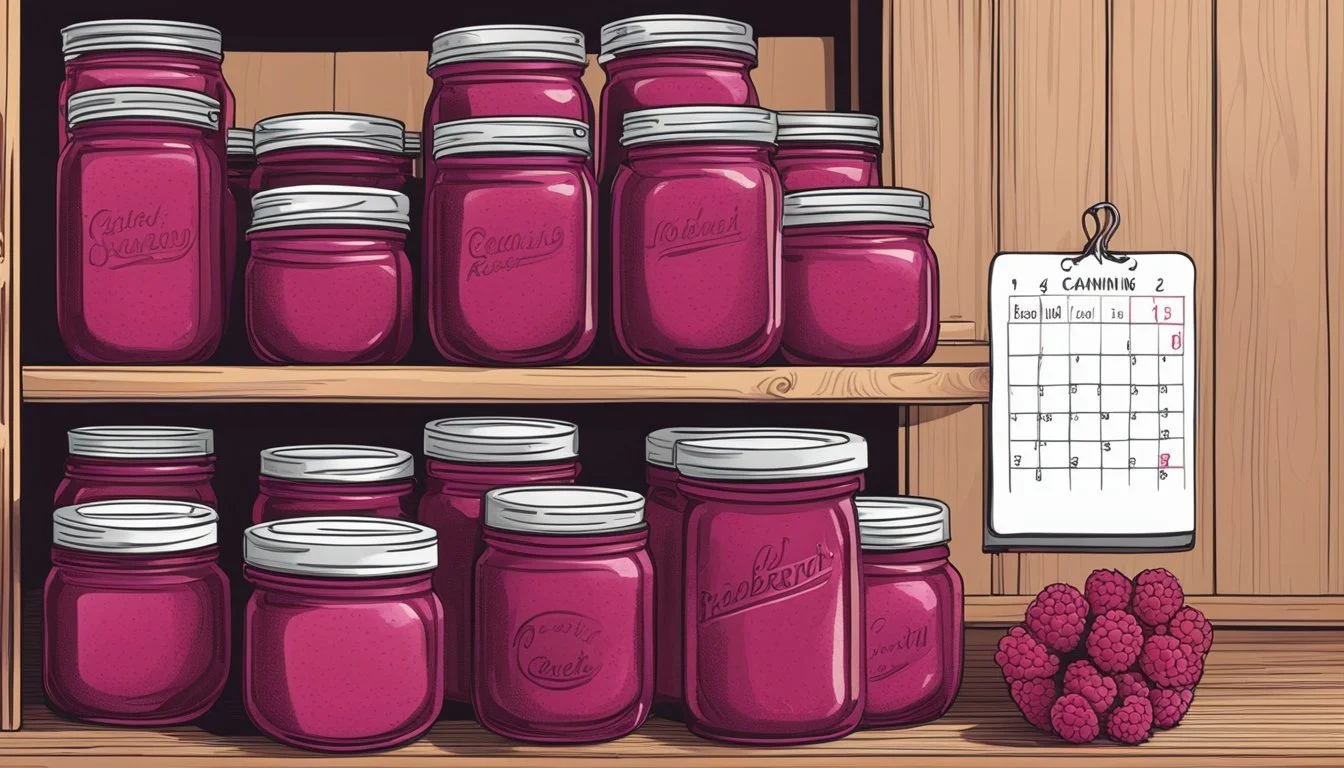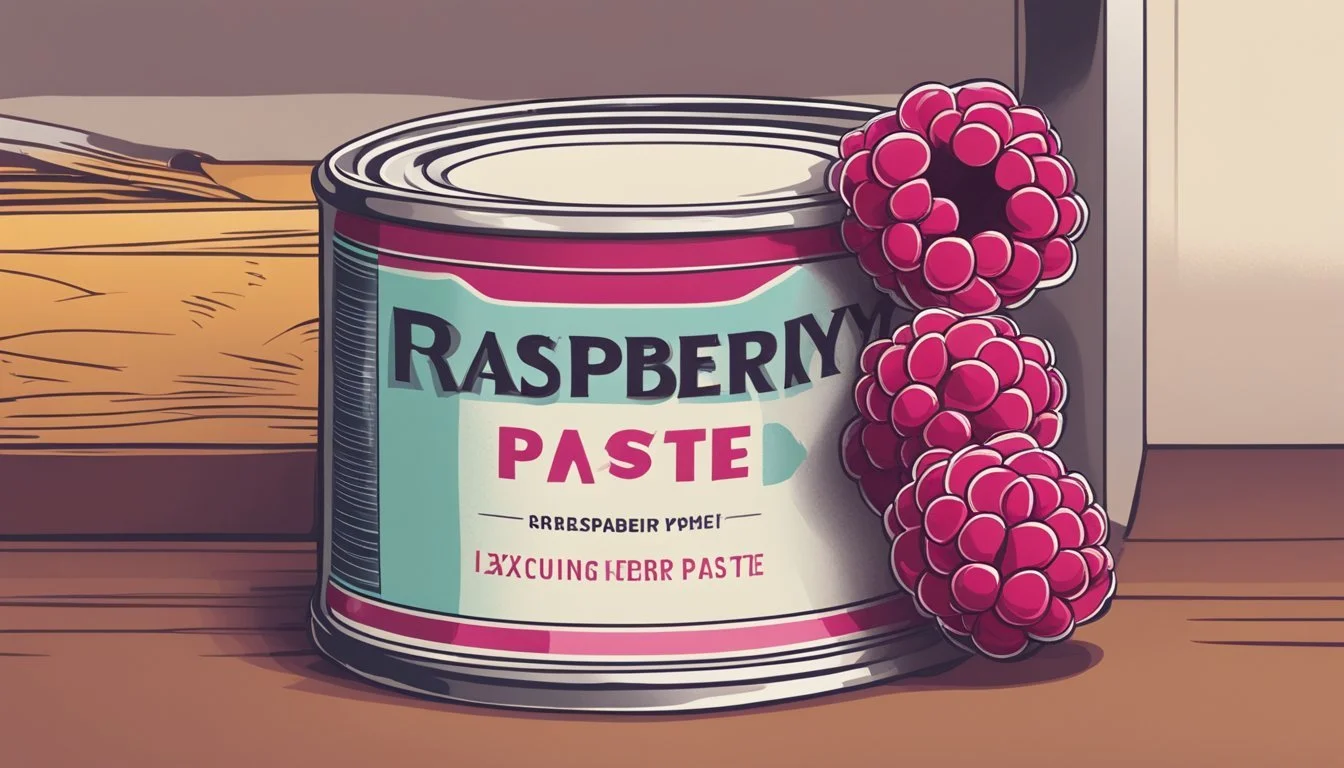How Long Does Canned Raspberry Paste Last?
Unveiling Shelf Life Details
Canned raspberry paste, like many preserved foods, offers a prolonged shelf life compared to its fresh counterparts. This shelf life is largely due to the canning process which is designed to maximize preservation by sealing the product in an airtight container, preventing the growth of bacteria, yeasts, and molds. The quality of canned raspberry paste during storage is determined by several factors, including the canning method, the acidity of the fruit, and the storage conditions.
When stored in a cool, dry place, canned raspberry paste maintains its best quality for about one to two years, although it is generally safe to consume beyond that time frame if the can remains intact and is not compromised. The high sugar content in raspberry paste acts as a natural preservative, further extending its shelf life. It's important to note that the quality here refers to the taste and texture of the raspberry paste rather than its safety; over time, the paste may experience changes in flavor and consistency.
Consumers should inspect canned goods for signs of spoilage, such as dents, rust, leaking, or bulging, before use. If the packaging is compromised, or if the contents show any sign of spoilage after opening, such as an off odor or color, it should be discarded. Thus, proper storage and regular inspection of canned raspberry paste can ensure it remains a safe and delicious addition to various recipes and food items.
Understanding Canned Food Shelf Life
In discussing the longevity of canned raspberry paste, it's crucial to understand the principles of expiration dates and the various factors that affect shelf life. Canned foods, when stored properly, have an impressively long shelf life owing to the sealed and sterilized environment within the can.
Determining Expiration Dates
Canned raspberry paste, like other canned foods, has an expiration date imprinted by manufacturers to indicate when the product is expected to remain at its best quality. While the paste may be safe to consume beyond this date, optimal flavor and texture are usually associated with consuming the product before the expiration date.
Expiration date guidelines for:
High-acid foods: Approximately 18 months
Low-acid foods: Two to five years
Factors Affecting Shelf Life
The shelf life of canned raspberry paste can be significantly influenced by several key factors:
Storage conditions: To preserve the best quality, cans should be stored in a cool, dark place.
Temperature: A consistent temperature between 50°F and 70°F is ideal for maximizing shelf life.
Can integrity: The absence of pitted rust, dents, or swollen tops ensures the can remains sealed and the contents safe for consumption.
Note: The guidelines above serve to maintain the product's best quality and do not necessarily reflect safety deadlines. Properly canned food in perfect storage conditions may retain safety beyond these periods, but with possible changes in texture and flavor.
Storage Guidelines
When storing canned raspberry paste, ensuring the product maintains its quality over time hinges on a few critical factors, such as temperature control and protection from sunlight.
Optimal Storage Conditions
For canned raspberry paste, the optimal storage conditions include keeping the product in a cool, dry place. These conditions help to slow the degradation process and retain the flavor and texture of the paste. Canned goods, when unopened, typically fare best in environments that are away from extreme temperature fluctuations.
Impact of Temperature on Storage
Temperature plays a pivotal role in the storage of canned raspberry paste. One should store the paste at a consistent room temperature, ideally between 50°F and 70°F (10°C and 21°C). Excessive heat can cause the paste to spoil or ferment, while too cold conditions may affect its texture and consistency.
Sunlight and Storage Location
Direct sunlight can be detrimental to canned goods, including raspberry paste. It can lead to the degradation of the can itself and potentially affect the taste and safety of the product. Hence, it's advisable to store canned raspberry paste in a location where it is shielded from direct sunlight, which typically equates to being kept in a pantry or a cupboard away from windows.
Safety and Quality Preservation
Preserving the safety and quality of canned raspberry paste hinges on proper storage and awareness of spoilage indicators. Maintaining a vigilant eye on canned goods ensures both optimal taste and food safety.
Identifying Spoilage Signs
Visual Inspection: A key indicator of spoilage in canned raspberry paste is the presence of mold or changes in color. The consumer should look for signs such as mold growth or color darkening which may suggest contamination.
Seal Integrity: Jars that have bulging lids or show signs of leaking, rusting, or damage pose a significant health risk. These symptoms can indicate the ingress of bacteria leading to spoilage or even botulism—a severe foodborne illness caused by a dangerous toxin.
Odor Examination: If a jar is opened and the product emits an off-odor, this is an immediate signal of spoilage. The aroma of raspberry paste should be fruity and fresh; any foul or unusual smells indicate it should not be consumed.
Keeping Canned Foods Safe
Storage Conditions: To ensure the longevity of canned raspberry paste, it should be kept in a cool, dry area away from direct high or low temperatures. Consistent storage temperature helps prevent spoilage and maintains food quality.
Temperature Guidelines: After opening, raspberry paste should be stored in the refrigerator to prevent the growth of bacteria that could lead to spoilage.
Time Frame: While unopened canned raspberry paste can last for approximately 2 years when stored correctly, opened raspberry paste is best consumed within 6 months for optimal quality. It remains safe to eat as long as there are no signs of spoilage, but the quality may diminish over time.
Preventive Measures: Always use clean utensils when serving raspberry paste to avoid introducing bacteria into the jar, and ensure the lid is securely closed after each use to maintain good condition and reduce exposure to contaminants.
Maximizing Freshness and Flavor
To ensure canned raspberry paste retains its peak freshness and flavor, proper storage is crucial. Once opened, it should immediately be transferred to an airtight container to minimize exposure to air, which can degrade the paste’s texture and taste.
Storage Temperature:
Refrigerated: Below 40°F (4°C) is ideal for maintaining freshness.
Cabinet: A cool, dry place if unopened.
Storage Tips:
Seal Tightly: Limit air contact with a secure lid.
Use Clean Utensils: To avoid contamination and preserve flavor.
Observe Color: A vibrant hue indicates the paste is fresh. Fading suggests spoilage.
Shelf-life After Opening:
Refrigerator: Up to 6 months.
Keeping Texture Intact:
Humidity: Low humidity helps preserve the original consistency.
Handling: Minimize contact to maintain texture.
By following these practices, one can help maintain the raspberry paste’s rich color, robust flavor, and smooth texture, making its use in culinary applications consistently effective.
Utilization in Cooking
Canned raspberry paste is a versatile ingredient that can enhance various dishes with its concentrated berry flavor. Chefs and home cooks alike value it for its rich taste and ability to complement sweet and savory recipes.
Incorporating into Recipes
One can easily integrate canned raspberry paste into a variety of recipes. It particularly shines in sweet applications, such as:
Desserts: Adding a swirl to cheesecakes or layering it in parfaits
Baking: Enriching cakes, muffins, and pastries with a fruity note
Confectionery: Crafting chocolate fillings or as a base for fruit bars
Raspberry paste is not limited to sweet creations; it also elevates savory dishes:
Soups and Stews: A small spoonful can balance flavors with its tangy edge
Sauces: Infusing vinaigrettes or glazes for an unexpected zing
Reviving Flavor and Quality
To ensure the raspberry jam-like qualities of the paste are pronounced when used for cooking:
Taste Testing: Before adding to dishes, chefs should assess the flavor intensity as it can diminish over time.
Adjusting Sweetness: As needed, one might enhance the paste with sugar or honey to revive its sweetness.
Texture: If the consistency has thickened, one can gently warm the paste and thin it with a touch of water or lemon juice.
Using canned raspberry paste as an ingredient not only simplifies the cooking process but also provides a significantly bold raspberry flavor that can be enjoyed throughout the year.
Health and Nutrition
When discussing the health and nutrition of canned raspberry paste, one important factor to consider is its nutritional value. Raspberries are well-known for their rich content of dietary fiber, vitamins, and antioxidants. Once converted into a paste and canned, most of these nutrients are preserved, although some vitamin content, particularly vitamin C, may decrease slightly due to the heat processing involved in canning.
Nutrients in Canned Raspberry Paste:
Dietary Fiber: Aids in digestive health and can help maintain a healthy weight.
Vitamins: Includes Vitamin C and Vitamin E, which are important for skin health and immune function.
Minerals: Such as manganese, which contributes to bone health and metabolism.
A canned raspberry paste typically retains most of its nutritional value, especially when the canning process is executed promptly after harvesting to lock in freshness. It is recommended to consume the paste within the manufacturer’s suggested timeframe for optimal quality and nutrient intake.
Here is a breakdown of the key nutritional elements typically found in canned raspberry paste:
Nutrient Benefit Fiber Supports digestion Vitamin C Antioxidant, boosts immunity Manganese Essential for bone health
Consumers seeking to maintain a healthy diet can confidently incorporate canned raspberry paste in moderation as part of a balanced diet. One should always check the label for added sugars, as some products may contain additional sweeteners that can affect overall nutritional content.
Canned Raspberry Paste in Various Dishes
Canned raspberry paste is a versatile ingredient that can enhance a variety of dishes, both sweet and savory. Its use extends beyond traditional preserves, offering a unique flavor component to numerous culinary creations.
Desserts and Jams
In the realm of desserts, canned raspberry paste serves as a key element, providing a rich and concentrated berry flavor. It can be swirled into cheesecakes for a vibrant ribbon of fruitiness or used as a topping for puddings and ice creams. The paste is also an excellent substitute for fresh raspberries in tarts and pastry fillings, where its consistency helps maintain structure and its concentrated taste enlivens the overall dish.
When making homemade jams, raspberry paste adds depth and complexity. It can be combined with other fruits such as strawberries and grapes, creating blends like raspberry-strawberry jam or raspberry-grape jelly. The paste's thicker consistency reduces cooking time, a practical benefit for busy cooks.
Savory Applications
In savory dishes, canned raspberry paste finds its place by contributing a subtle sweetness and tanginess that complements richer flavors. It can be integrated into vinaigrettes to drizzle over salads or used as a glaze for roasted meats like pork and chicken. Raspberry paste pairs exceptionally well with balsamic vinegar, introducing a fruity counterpoint to the vinegar's sharpness.
It can also be stirred into barbecue sauces, giving a unique twist to grilled recipes. The natural pectins in the paste help thicken sauces, while its concentrated raspberry flavor infuses the dish with a pleasant, not overwhelming, fruit undertone.
Handling Leftovers and Partially Used Cans
Once a can of raspberry paste is opened, the contents should be promptly refrigerated or frozen to maintain quality and safety. The right techniques can significantly extend the longevity of the product while also minimizing food waste.
Refrigeration and Freezing Techniques
After opening, unused raspberry paste should be transferred from the can to an airtight container to prevent it from absorbing other odors and flavors from the refrigerator. It's crucial to note that the leftovers must be stored at temperatures below 40°F (4°C). The refrigerated raspberry paste can typically last for up to 5-7 days.
For longer storage, freezing is an effective option. Raspberry paste should be portioned into usable amounts and placed in freezer-safe bags or containers, clearly labeled with the date of freezing. When frozen at 0°F (-18°C) or lower, the raspberry paste can last for several months, although the optimal quality is best used within 1-2 months.
Minimizing Waste
To reduce waste, individuals should:
Plan ahead when using raspberry paste, only opening what will be needed.
Monitor leftovers for any signs of spoilage, such as mold or off odors, as these indicate that the paste should be discarded.
Creative reuse of the paste in various recipes can ensure that leftovers don't go unused.
For an unopened jar of raspberry paste, the shelf life is typically longer than that of canned goods, often ranging from 1-2 years when stored in a cool, dry place. However, always check the expiration date provided by the manufacturer to determine its best-by date.
Considerations for Home Canned Goods
When preserving food through home canning, particularly high-acid foods like raspberry paste, one should pay close attention to the processes and conditions that impact the longevity and safety of the food. The types of foods and the method used for canning them are central to their shelf life.
Pressure Canning Process
The pressure canning process is critical for maintaining the safety and extending the shelf life of low-acid foods. These foods require the use of a pressure canner to achieve the high temperatures necessary to eliminate the risk of foodborne bacteria such as Clostridium botulinum. Food items processed via pressure canning can last for several years if sealed and stored properly. High-acid foods, including raspberry paste, typically have more flexibility since they can be processed using a boiling water canner. However, to ensure a long-lasting and safe product, all home canned foods must be sealed and handled with care and attention to canning guidelines.
Handling Low-Acid Foods
Low-acid foods, which have a pH value higher than 4.6, pose a greater challenge in home canning due to their susceptibility to bacteria. Properly utilizing a pressure canner to process these types of foods is crucial. It ensures that the contents of the jar reach a temperature that is high enough to kill potentially harmful microorganisms. One should always follow a tested home canning recipe specifically designed for low-acid foods and adhere strictly to processing times and pressures to maintain safety. Home canned goods should be stored in a cool, dry place, away from direct sunlight, to preserve their quality and extend their shelf life.
Troubleshooting Canned Goods Issues
When it comes to canned raspberry paste, ensuring the integrity of the can and its contents is vital for safety and quality. Recognizing the signs of can damage and taking measures to prevent contamination are key steps a consumer can take.
Dealing with Can Damage
Rust: Cans showing any signs of rust compromise the can's integrity and can lead to contamination of the contents. If a can of raspberry paste is rusted, it is best to discard it.
Dents: Minor dents may not affect the product, but deep or sharp dents, especially near seams, may disrupt the vacuum seal and lead to spoilage. A damaged seal can allow bacteria to enter and spoil the raspberry paste.
Swelling: Swollen cans are a clear indicator of gas production from bacteria, which means the canned raspberry paste is no longer safe to consume. Swelling often signifies that the food has gone bad or is contaminated.
Vacuum Seal: The vacuum seal prevents air and contaminants from entering the can. If the lid of a can appears to be loose or if the seal is broken, the raspberry paste inside should not be used.
Contamination Prevention
The following steps can prevent contamination:
Always inspect cans before purchase and before use, checking for any damage or signs of swelling.
Store canned goods in a cool, dry place to maintain the vacuum seal and prevent rust and other damage.
Upon opening, one should transfer any unused raspberry paste into a clean, airtight container and refrigerate to prevent contamination.
Dates and Regulations
When assessing the longevity of canned raspberry paste, it's essential to understand the meaning and regulatory aspects of the dates printed on the can.
Understanding 'Sell By' and 'Use By' Dates
Sell By dates are primarily for retailers, indicating the last day a product should be sold to ensure peak quality for the consumer. Use By dates, meanwhile, guide consumers on the last day the manufacturer vouches for the product's optimal quality. These dates are not legally mandated expiration dates, but rather the manufacturer's best estimates for when the product should be consumed.
Sell By: Suggests the last day for sale
Use By: Indicates the last day of peak quality
Expiration dates, on the other hand, are less common on canned goods but can appear on certain products. Consumers should note that while products may not be at their best quality past these dates, it does not necessarily mean they are unsafe for consumption, particularly with canned goods like raspberry paste, which are designed for long shelf lives under appropriate storage conditions.

